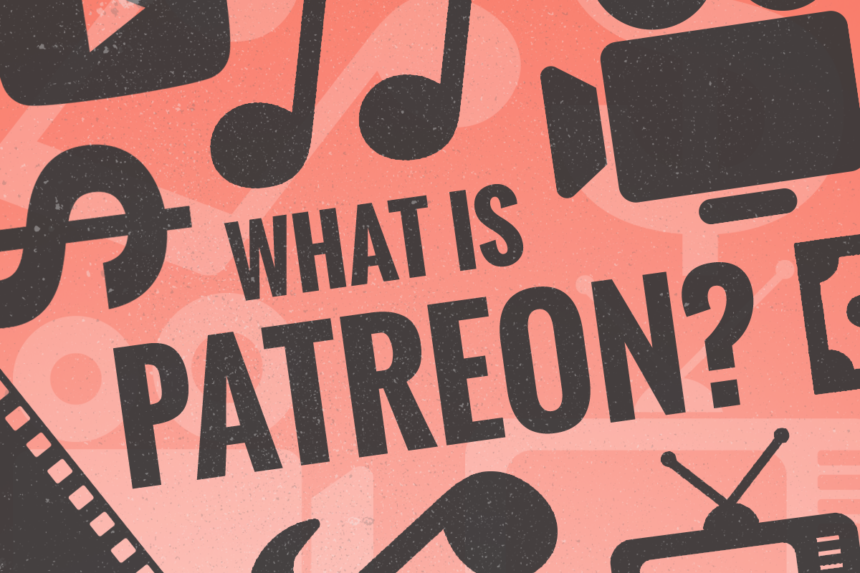In today’s digital-first economy, more Americans are turning to independent creators for entertainment, education, and inspiration. But as the creator economy grows, so does the question: What is a Patreon? Whether you’re an artist, podcaster, writer, or filmmaker, you’ve possibly heard of this platform. But for audiences and new creators alike, the concept can still feel a little mysterious.
At its core, Patreon is a membership-based platform that allows creators to earn income directly from their fans. Instead of depending entirely on ads or brand sponsorships, creators can offer exclusive content and community access to supporters who pay a monthly fee. It’s a system that fosters creative freedom while building a more sustainable income model. Reddit users routinely share success stories and frustrations about Patreon, highlighting both its potential and its learning curve.
So, if you’re curious about what a Patreon is, how it works, and whether it’s worth your time or money, you’re in the right place. Let’s break it all down.
What Is a Patreon? Understanding the Platform
To answer the question what is a Patreon, we need to start with its foundation. Patreon was founded in 2013 by musician Jack Conte and developer Sam Yam. The idea stemmed from Conte’s frustration with monetizing his YouTube content. Rather than waiting for sporadic ad revenue, he envisioned a platform where fans could pay creators directly for their work.
Today, Patreon allows creators to build a subscription-based model where fans, called “patrons,” contribute a fixed amount each month. In return, patrons get access to tiered rewards—think behind-the-scenes footage, early access, exclusive posts, Q&As, and even physical merch.
The beauty of Patreon lies in its flexibility. Whether you’re a visual artist offering digital prints, a true crime podcaster sharing bonus episodes, or a fitness coach providing weekly meal plans, you can tailor your membership benefits to fit your brand.
How Patreon Works for Creators and Fans
When a creator signs up for Patreon, they build a profile outlining their creative mission and the types of rewards they’ll offer. They then create membership tiers, often starting at $1 or $5 per month and increasing in value based on perks. For example, a $10/month tier might include early access to content and a monthly live stream, while a $25/month tier could add personalized shout-outs or exclusive merch.
From the fan’s perspective, becoming a patron is a way to support creators directly. It’s more than a transaction—it’s about community and connection. As one Redditor put it on r/patreon: “It feels like being part of a secret club that gets the good stuff first.”
The platform handles payment processing, tier management, and communication tools, allowing creators to focus on making content. For full-time creatives or side hustlers, Patreon can be a lifeline.
Why Creators Use Patreon: Pros and Pitfalls
The biggest benefit of using Patreon is that it gives creators financial independence. Instead of worrying about algorithm changes on YouTube or demonetization, creators can rely on a steady income stream from their most loyal fans. This means more creative risk-taking and less stress about viral hits.
Another major perk is community building. Patreon allows for direct interaction through comments, messages, and private posts. Many creators say their patrons are their most engaged and supportive audience segment.
“Patreon helped me go from hobbyist to full-time artist. It’s not just money—it’s motivation.” — Sarah Nguyen, digital illustrator and Patreon creator with over 2,000 patrons.
Pitfalls: Growth Takes Time
Despite its benefits, Patreon isn’t a get-rich-quick scheme. Many Reddit users on r/entrepreneur and r/contentcreation note that success on the platform often depends on having an existing audience. Without a strong fanbase, creators might struggle to attract patrons.
There’s also the pressure to deliver. Once people are paying monthly, they expect consistent, high-quality content. Creators must balance their public content with exclusive offerings without burning out.
Common Patreon Content Types and Successful Niches
Patreon supports a wide range of creators, and some niches perform particularly well:
1. Podcasting
Independent podcasters use Patreon to share bonus episodes, early releases, and ad-free content. Shows like “True Crime Obsessed” and “Chapo Trap House” earn tens of thousands of dollars per month through their patron bases.
2. Art and Illustration
Artists can offer digital downloads, exclusive sketches, and behind-the-scenes studio looks. Patreon makes it easier to turn a creative practice into a full-time income.
3. Writing and Journalism
From serialized fiction writers to investigative journalists, Patreon enables deeper storytelling free from editorial constraints.
4. Education and Tutorials
Educators and coaches—from language teachers to fitness trainers—use Patreon to provide lessons, resources, and one-on-one support.
5. Musicians and Performers
Musicians can share unreleased tracks, live performance videos, or even invite patrons to virtual jam sessions.
How Fans View Patreon: Insights from Reddit
Reddit offers a window into how users really feel about Patreon. In r/patreon and r/fansuggestions, the most common praises include exclusive content, feeling close to creators, and the ability to support independent work.
However, fans also caution that not all Patreons are created equal. Some creators overpromise and underdeliver, leading to patron frustration. One Redditor wrote:
“I unsubscribed after 3 months because the content wasn’t any different from what they posted on Instagram. It has to feel worth it.”
This highlights the importance of authenticity and transparency. Patrons want to feel like they’re getting something meaningful—and that their support is making a difference.
How Much Can You Earn on Patreon?
Earnings on Patreon vary wildly. Some creators make $100/month, while others rake in $50,000+. Success depends on niche, audience size, engagement level, and the value of rewards offered.
Reddit users often suggest setting realistic goals. Many creators start by aiming for $500–$1,000/month and scale up as they grow their patron community. Using analytics and surveys helps fine-tune rewards and keep patrons happy.
Is Patreon Right for You?
Whether you’re a creator or a fan, understanding what a Patreon offers is essential. For creators, it’s a chance to take ownership of your income and build a closer bond with your audience. For fans, it’s a way to directly support the work you love—while getting perks that go beyond likes and shares.
However, success requires planning, consistency, and communication. Creators should be clear about what patrons will receive, how often, and why it’s worth their support.
Conclusion: What Is a Patreon? It’s a Creative Revolution
In a time when traditional media is in flux and creators are carving their own paths, Patreon stands out as a powerful tool. So, what is a Patreon? It’s more than a platform. It’s a movement toward creative independence, direct connection, and community-powered funding.
As creators and audiences continue to redefine how art and content are valued, Patreon offers a compelling answer—one subscription at a time.
If you’re considering becoming a patron or launching your own page, start by exploring the kinds of content you love. Check Reddit threads, browse creator profiles, and think about how you can add value. The future of content is collaborative—and Patreon is at the heart of it.






